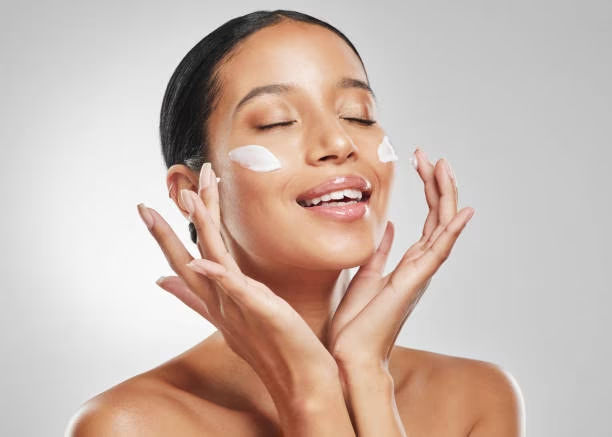
The A-Z of Makeup Primers: The Complete Guide!
 Sep 4, 2023
Sep 4, 2023In the world of makeup, the key to achieving a flawless and long-lasting look lies in the often underestimated product known as makeup primer. Whether you’re a makeup enthusiast or a beginner, understanding the importance of makeup primers can elevate your beauty routine to new heights. In this article, we’ll dive into the world of makeup primers, exploring what they are, why they matter, and how to choose the perfect one for your skin type and needs.
The Basics of Makeup Primers
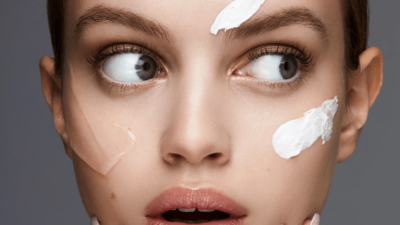
Makeup primers are like the canvas for your artwork. They are lightweight, silky, and typically applied after your skincare routine but before your foundation. Their main function is to create a smooth base that enhances the application and longevity of your makeup. Think of it as a protective shield that ensures your makeup stays put throughout the day or night.
Why Primers Matter?
1. Smoothing Effect
Primers create a smooth texture on your skin’s surface, minimizing the appearance of pores, fine lines, and imperfections. This results in a more even canvas for your foundation, allowing it to glide on effortlessly.
2. Extended Wear
By providing a barrier between your skin and makeup, primers prevent your makeup from being absorbed into your skin. This helps your makeup stay fresh and vibrant for longer periods, making it ideal for events or long workdays.
3. Oil Control
If you have oily skin, a mattifying primer can be a game-changer. It helps control excess oil production, reducing the need for frequent touch-ups and maintaining a matte finish.
4. Hydration and Nourishment
Some primers are infused with beneficial ingredients or vitamins that hydrate and nourish your skin, creating an ideal environment for makeup application.
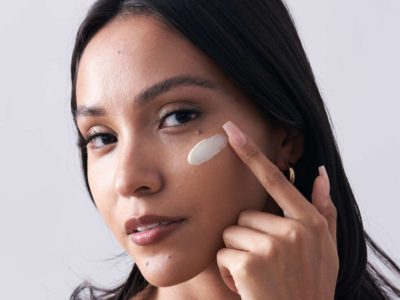
Choosing the Right Primer
The key to a successful makeup primer application is selecting the right one for your specific skin needs. Here’s how to go about it.
1. Skin Type
The first thing to consider is the type of skin. Do you have an oily skin or a dry skin? Different primers cater to different skin types. For example, a hydrating primer is excellent for dry skin, while an oil-free primer suits oily skin.
2. Concerns
Identify your skin concerns, such as redness, large pores, or dullness. There are primers designed to address these issues. A color-correcting primer can help neutralize redness, while a blurring primer minimizes the appearance of pores.
3. Finish
Think about the finish you want. Do you prefer a matte, dewy, or a radiant look? Your primer’s finish can influence the overall look of your makeup.
4. Ingredients
Look for primers with skin-loving ingredients like antioxidants, hyaluronic acid, or peptides. These can enhance the health of your skin over time.
Step-By-Step Instructions for Applying Makeup Primers on Oily Skin
1. Cleanse
Start with a clean face by washing with a gentle cleanser to remove any dirt, oil, and makeup residue. Pat your face dry with a clean towel.
2. Moisturize
Apply an oil-free, lightweight moisturizer. This helps create a smooth base and prevents your skin from producing excess oil to compensate for dryness.
3. Wait
Allow the moisturizer to fully absorb into your skin for a few minutes before moving on to the next step. This will make sure that a better grip is used for the primer.
4. Choose the Right Primer
Opt for an oil-controlling primer specifically designed for oily skin. Look for keywords like “matte,” “oil-free,” or “pore-minimizing” on the product label.
5. Use a Small Amount
Take a very small amount of primer on your fingertips. It’s important to remember that even a little goes a long way, and using too much can lead to a heavy finish.
6. Application
Focus on applying the primer to areas that tend to get oily, such as the forehead, nose, chin, and cheeks. Gently dab or lightly massage the primer onto these areas. Avoid rubbing vigorously, as it might irritate the skin.
7. Blend
Use gentle upward motions to blend the primer evenly across your face. Pay extra attention to areas with larger pores or uneven texture.
8. Allow to Set
Give the primer a minute or two to set on your skin. This helps create a smooth and even canvas for your makeup.
9. Apply Makeup
Once the primer is set, proceed with applying your foundation, concealer, and other makeup products as usual. The primer will help your makeup adhere better and last longer.
10. Set with Powder
If needed, set your makeup with an oil-absorbing powder. This additional step can further control shine throughout the day.
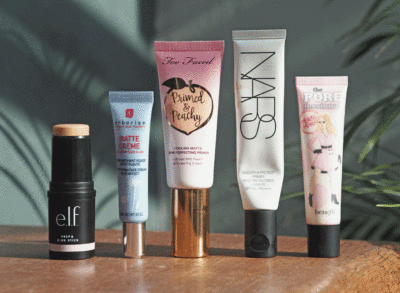
Step-By-Step Instructions for Applying Makeup Primers on Dry Skin
1. Cleanse
Begin with a gentle cleanser to cleanse your face and remove any dirt or impurities. Gently pat your skin dry with a clean towel.
2. Moisturize
Apply a hydrating moisturizer suited for dry skin. Allow it to fully absorb into your skin for a few minutes. This step helps create a smooth and hydrated base for the primer.
3. Wait
Give the moisturizer enough time to sink into your skin before moving on to applying the primer. This ensures a seamless application.
4. Choosing the Right Primer
Just like it’s important to select the right primer for an oily skin, similarly its crucial that you choose the right primer which is suitable for your dry skin. Opt for a hydrating or illuminating primer that’s specifically formulated for dry skin.
5. Application
Apply the primer to your entire face or focus on areas that tend to be drier, such as the cheeks and forehead. Gently press or pat the primer onto your skin rather than rubbing, to avoid disturbing the moisturizer underneath.
6. Spread Evenly
Use your fingertips to gently spread the primer across your face in a thin layer. Ensure it’s evenly distributed for a smooth base.
7. Allow to Set
Give the primer a minute or two to set on your skin. This allows it to create a smooth canvas and helps your makeup adhere better.
8. Apply Makeup
Once the primer is set, proceed with applying your foundation, concealer, and other makeup products. The primer will provide a hydrated base for your makeup.
9. Highlighting
If you’re using an illuminating primer, you can also dab a bit onto the high points of your face (cheekbones, bridge of the nose, and cupid’s bow) for a subtle glow.
10. Set (Optional)
If you feel the need, lightly set your makeup with a translucent setting powder. However, be cautious not to over-powder, as this can emphasize dryness.
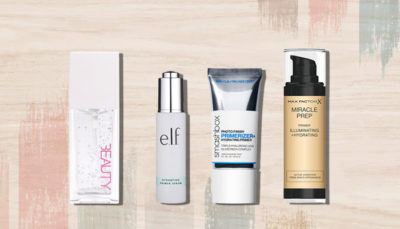
The goal with dry skin is to create a hydrated and smooth canvas for your makeup. Choosing products that provide moisture and radiance will help you achieve a fresh and dewy look.
Step-By-Step Instructions for Applying Makeup Primers on Combination Skin
1. Cleanse
Start with a clean face. Use a gentle cleanser to remove any dirt, oil, or makeup residue. Pat your face dry with a clean towel.
2. Moisturize
Apply a lightweight, oil-free moisturizer to hydrate your skin. Focus on dry areas while avoiding excessive application on oily zones.
3. Sunscreen
If your primer doesn’t contain SPF, apply a broad-spectrum sunscreen to protect your skin from UV rays. Allow it to absorb for a few minutes.
4. Primer Selection
Choose a makeup primer suitable for combination skin. Look for a mattifying primer for the oily areas and a hydrating or pore-blurring primer for the dry areas.
5. Apply Primer
Dispense a small amount of primer onto your fingertips or a makeup sponge. Dot it onto your face in the areas where you need it most. Typically, you’ll apply it to the T-zone (forehead, nose, and chin) for oil control and dry areas like cheeks for hydration.
6. Blend
Gently blend the primer into your skin using upward and outward motions. Ensure even coverage and focus on problem areas. Use a light touch; you don’t want to rub it off.
7. Allow to Set
Let the primer sit for a minute or two to set on your skin. This helps create a smooth canvas for makeup application.
8. Apply Makeup
Now, you can proceed with your foundation, concealer, and the rest of your makeup routine as usual. The primer will help your makeup last longer and appear smoother.
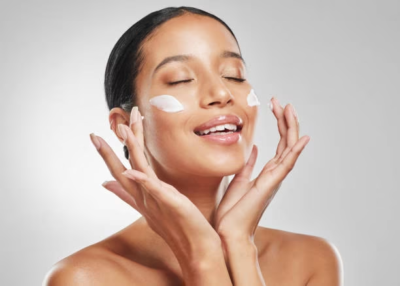
Type of Makeup Primers and their Benefits
1. Hydrating Primers
Hydrating primers are perfect for those with dry skin. They provide a moisture boost, helping to keep your skin supple and preventing your makeup from looking flaky or cakey. These primers often contain ingredients like glycerin and hyaluronic acid.
2. Mattifying Primers
If you struggle with oily skin, mattifying primers are your best friend. They work to control excess oil, leaving your skin with a matte finish throughout the day. Look for primers with ingredients like silica or clay.
3. Pore-Filling Primers
These primers are ideal for minimizing the appearance of large pores and creating a smooth canvas for your makeup. They often contain dimethicone, which blurs imperfections and makes your skin appear flawless.
4. Color-Correcting Makeup Primers
Color-correcting primers come in various shades to counteract specific skin issues. For example, green primers can neutralize redness, while peach or lavender tones can brighten and even out your complexion.
5. Anti-Aging Primers
Designed to combat the signs of aging, these primers often include ingredients like peptides and antioxidants. They help to smooth fine lines and wrinkles, making your makeup look more youthful.
6. Luminizing Primers
If you want a radiant and dewy finish, opt for a luminizing primer. These contain light-reflecting particles that give your skin a healthy glow, making you look refreshed and radiant.
7. Mineral Primers
These primers are typically silicone-free and are an excellent choice for those with sensitive or acne-prone skin. They contain natural minerals that provide a smooth base for your makeup.
Makeup primers may seem like an extra step, but they can make a world of difference in the final outcome of your makeup look. From providing a smooth base to extending the wear of your makeup, these magical products deserve a place in every makeup bag. By understanding your skin’s needs and choosing the right primer, you’ll be well on your way to achieving a flawless and long-lasting beauty look that turns heads wherever you go.














